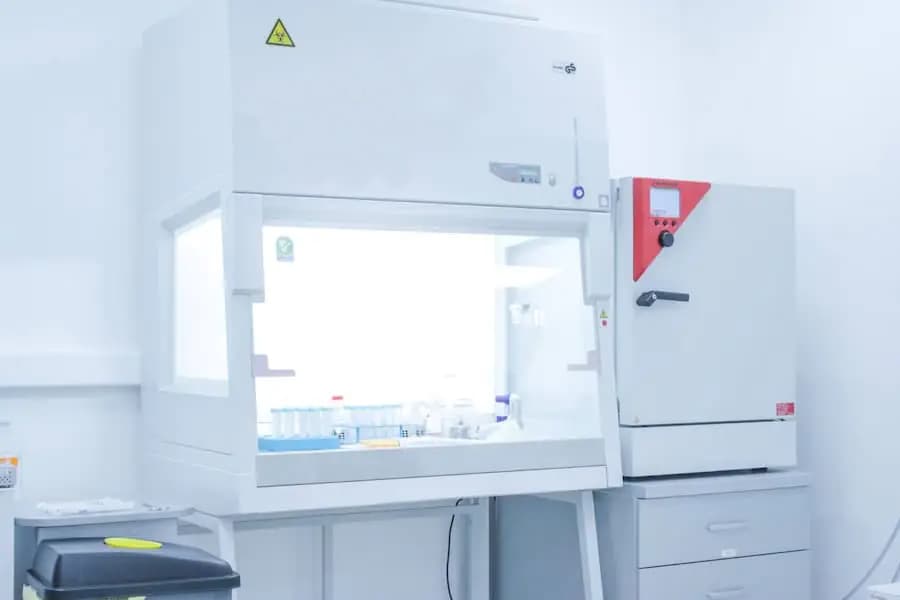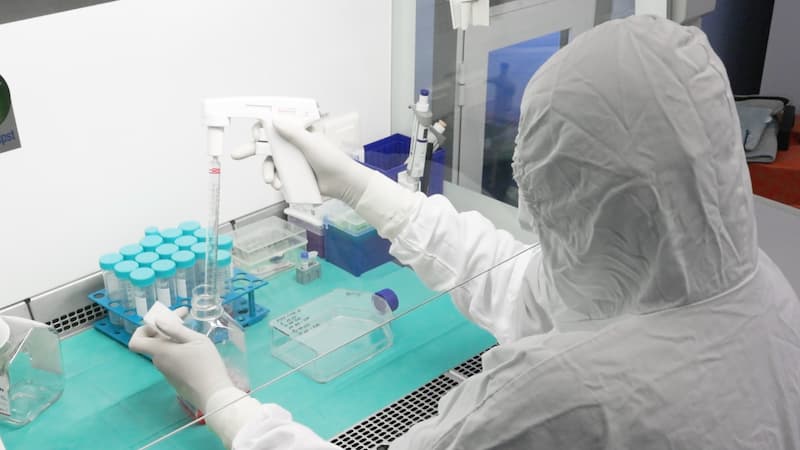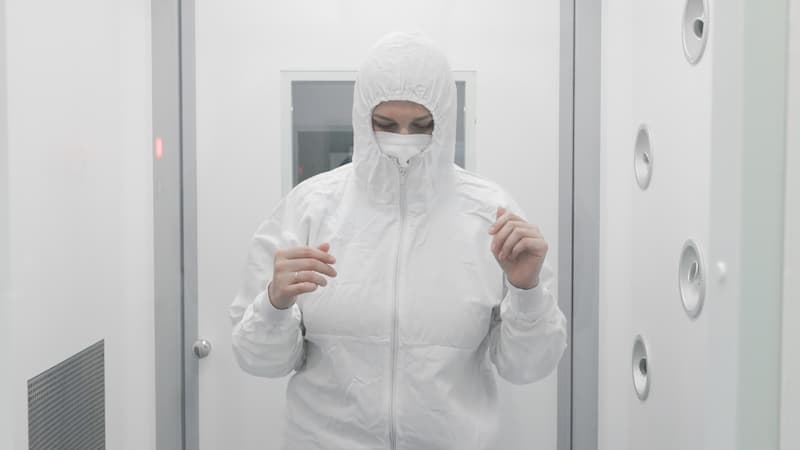At Swiss Medica, we not only offer a comprehensive range of treatments during and after stem cell therapy but also have our own stem cell laboratory to grow, check, store, and activate stem cells for patients. To ensure the efficacy and safety of our patients, we want to be in complete control of every process.
With an in-house laboratory, stem cells can be processed and prepared for treatment quickly, so there are no issues with transportation, timing, or possible contamination. For these reasons, we will go into more detail about our laboratory’s operations in this article.
Types of Stem Cells We Produce in Our Lab
We only use adult mesenchymal stem cells (MSCs). Depending on the specific condition, we use 2 sources of stem cells:
- Donor’s stem cells from authorized cell banks. We only use adult stem cells derived from the umbilical cord or placenta after a healthy childbirth.
- Own patient’s stem cells from blood samples. In these cases, our stem cell lab employs a specialized team to collect them. These cells can originate from bone marrow, fat, blood, or the gums.
To gain a better understanding of the types of stem cells commonly used in stem cell therapies, read our dedicated article.
Read it nowWhat Is the Procedure to Obtain a Patient’s Own Stem Cells
The procedure for obtaining stem cells begins in a biosafety cabinet. It is the most sterile section of our lab, where we isolate stem cells from patient samples.
The cabinet’s inner chamber, known as a laminar flow hood, reduces contamination risk while adhering to strict EU GMP Grade A standards. An air barrier provides sterility, removing all microbes and bacteria from any equipment used in cell tests and sampling.
The biosafety cabinet and the entire laboratory are the most sterile areas in our clinic.
The harvesting procedure is minimally invasive, comparable to regular blood tests. During the procedure, the patient may be given medicine to numb the area or put to sleep, especially when getting stromal vascular fraction (SVF) from fat tissue or bone marrow. The tissue is immediately transferred to our stem cell research laboratory.
For a deeper understanding of the safety measures and potential side effects of stem cell therapy, explore our comprehensive article on this important topic.
Read nowHow We Preserve Stem Cells After Their Harvesting
After harvesting, the donor’s or patient’s cells are stored in the cryobank, a repository of frozen cells. They are preserved in Dewar flasks with liquid nitrogen, keeping them frozen for years until needed. Cryobanks operate around the clock to maintain the temperature and conditions required to keep donor or patient’s cells from activating for an extended period of time.
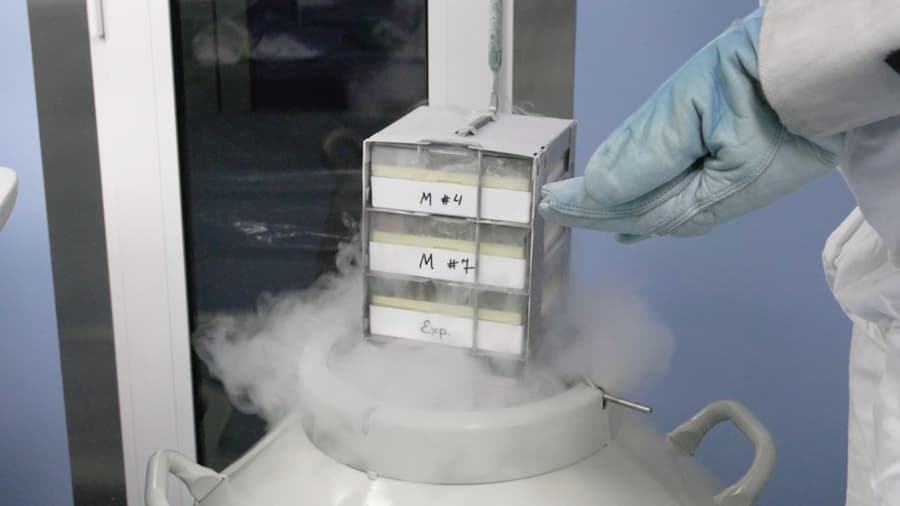
In some cases, we do not need to store stem cells and can use them immediately after harvesting.
Get a free online consultation
Our medical advisors are here to guide you through every step. Discover how our modern facility and personalized care can benefit you.

Medical Advisor, Swiss Medica doctor
Where Stem Cells Are Grown
Prior to administration, we must awaken or grow cells. In some cases, we do not need to grow them and can simply activate and use them for administrative purposes.
Nutrient Farm
- The process of activation begins with retrieving and carefully thawing the frozen cells.
- Once thawed, the cells are transferred to a nutrient farm, which is a specialized environment. This farm resembles a series of plastic shelves, each with a carefully controlled environment for the cells to multiply and thrive in.
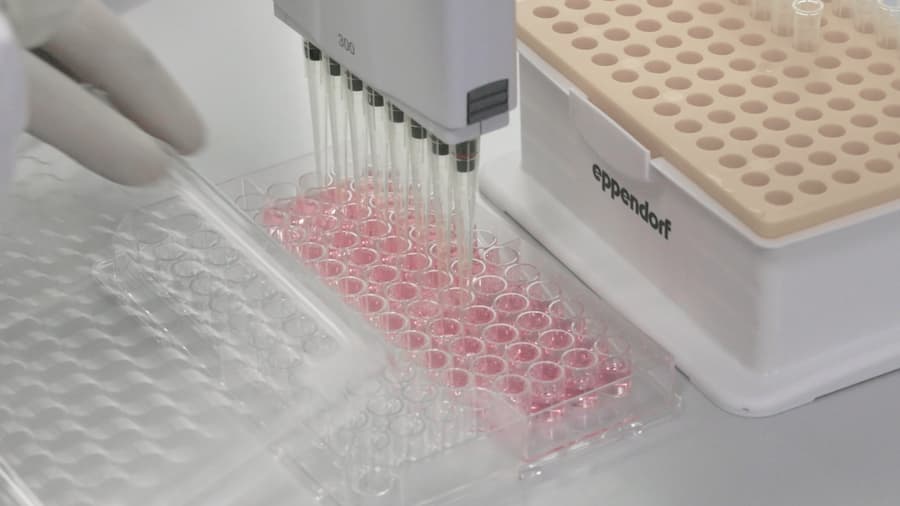
Technologies Ensuring Stem Cell Quality and Sterility
Following the growth phase, we subject cells to rigorous testing for sterility and quality. This ensures that only healthy, viable cells are eventually used in treatment. Several key pieces of equipment play critical roles in the process of preparing stem cells for administration:
- Incubators. These devices create an ideal environment for cells to multiply, simulating the conditions found in the human body, which is constantly warm. In our stem cell lab, we have two incubators: one for initial cell preparation and one for sterile cells.
- Microbiological analyzers for monitoring microbial growth in cell cultures.
- Centrifuges. They are used for cell purification, separating cell populations based on density. Chemical reagents are used to carefully release cells from their plastic supports, which are then separated from their growth medium via centrifugation. This process, when repeated several times, eliminates any residual medium and results in a clean, concentrated cell and exosome suspension.
- Flow cytometers. They are essential for preparing the therapeutic dose of cells because they provide detailed observation of the cells and ensure their viability.
With these technologies, we have implemented stringent quality control measures, including:
- Phenotyping, used to assess cell characteristics and ensure their suitability for therapy.
- Computer-generated graphs, which provide vital insights into cell behavior, allowing for continuous monitoring and analysis.
Before administering cells to the patient, the stem cell research laboratory team carefully counts them and assesses their viability, ensuring that only the most robust cells are selected for therapy. They also check the cell culture several times to ensure that no microorganisms are present that could be harmful to health.
In our article on the production process, we provide an in-depth look at how we utilize our equipment.
Read it now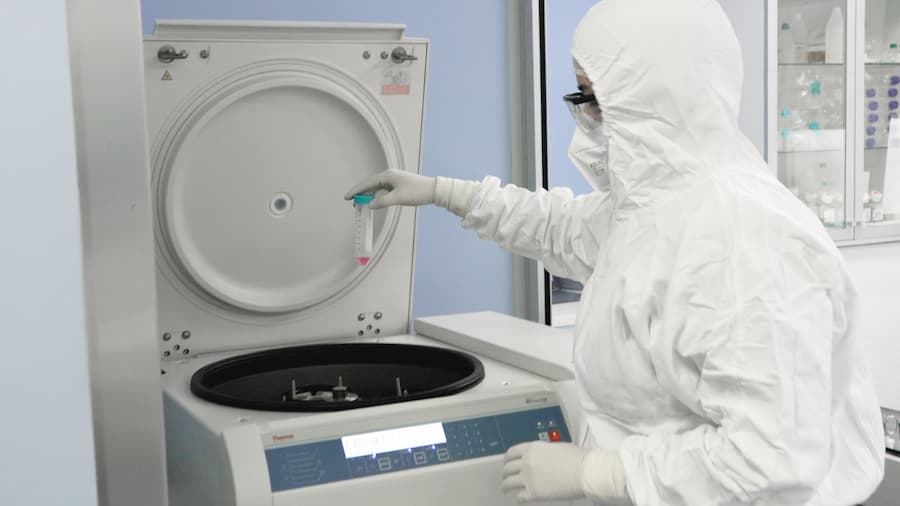
How We Provide a Clean and Controlled Environment
Throughout the process, cleanliness is essential. It allows us to produce high-quality products that benefit our patients’ health and well-being.
All equipment in our stem cell lab regularly passes all needed tests:
- Our stem cell laboratory meets EU GMP Grade A standards, which means the cleanest environment and surfaces that can be used for sterile operations.
- To ensure their safety, stem cells are processed in a laminar flow biosafety cabinet before being transferred to the surgery room via a UV disinfectant airlock.
- Every month, in-house laboratory professionals test the laboratory environment for sterility, and at least quarterly, an independent laboratory does the same..
Transforming Cells, Transforming Lives
The stem cell laboratory is more than just a processing center; it is also a hub for scientific innovation. The team here does not just clean and prepare cells. They transform the cells into either mesenchymal stem cells or neural stem cells. We also polarize macrophages to the M2 type to provide anti-inflammatory properties and enhance the effectiveness of the therapies.
To discover more about the range of advanced cell therapies we offer at Swiss Medica, explore our detailed article.
Explore nowOur lab’s strength lies in its highly skilled team and its commitment to using advanced techniques to push the boundaries of regenerative medicine. They meticulously follow the same strict procedures as those used in established cell banks, ensuring the highest standards of quality and safety. We invite you to take a tour of our laboratory. You will witness every step of working with stem cell products.
Contact us
We use advanced technology and strict procedures to ensure the purity and effectiveness of our stem cell products. Contact us for a free consultation and discover how we prioritize your safety.

Medical Advisor, Swiss Medica doctor
Ready to Explore More?
Discover the full potential of stem cells and dive into additional insightful articles.
